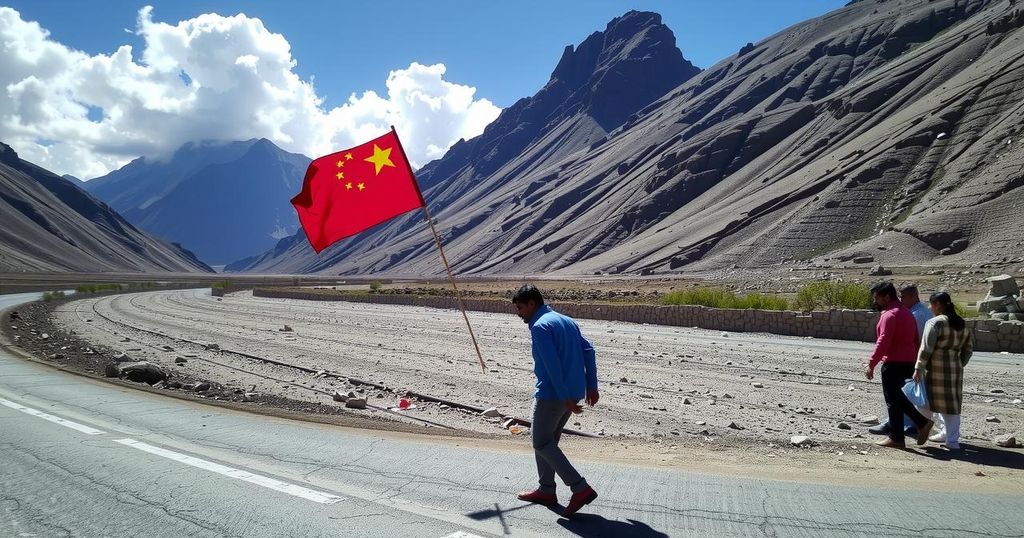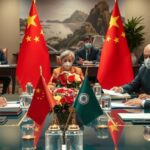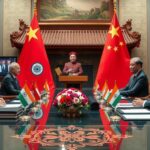Politics
ALLEGATIONS, ASIA, BRAHMAPUTRA, CENTRAL COMMITTEE, CHINA, COMMUNIST PARTY OF CHINA, HE ' AN, HUMAN RIGHTS, INDIA, INTERNATIONAL RELATIONS, JAI, JAISWAL, LADAKH, LAW AND ORDER, MEA, MINISTRY OF EXTERNAL AFFAIRS, RAND, RANDHIR JAISWAL, STATE COUNCIL, US-CHINA RELATIONS, XINHUA
Clara Montgomery
India Protests China’s Counties in Ladakh Territory
India has protested China’s establishment of two new counties in the Xinjiang Uygur Autonomous Region, which partially occupy Ladakh. The Ministry of External Affairs stated it does not recognize this as legitimate due to India’s claim over the area. A formal protest has been lodged, and concerns have also been expressed regarding Chinese hydropower projects on the Brahmaputra River.
India has officially expressed its discontent with China regarding the establishment of two new counties, which are partially located in the territory of Ladakh, as conveyed by the Ministry of External Affairs (MEA). Chinese state media reported that the Xinjiang Uygur Autonomous Region’s government established He’an County and Hekang County, both approved by the Central Committee of the Communist Party of China. MEA spokesperson Randhir Jaiswal emphatically stated that India does not recognize the illegal Chinese occupation of the region in question, thereby reiterating India’s claim over Ladakh. He added, “Creation of new counties will neither have a bearing on India’s long-standing and consistent position regarding our sovereignty… nor lend legitimacy to China’s illegal and forcible occupation of the same.” Furthermore, India has lodged a formal protest through diplomatic means to reinforce its stance. In addition to these developments, India has also raised concerns regarding China’s construction of a hydropower project on the Brahmaputra River.
The announcement of the two new counties in the Xinjiang Uygur Autonomous Region of China is significant due to the ongoing territorial disputes between India and China, particularly in the region of Ladakh. The establishment of these counties is perceived by India as an encroachment on its territory, which has historically been a point of contention between the neighboring nations. Diplomatic channels remain critical for communicating grievances, particularly in the context of India’s assertion of sovereignty over the region.
In conclusion, India has taken a firm stance against China’s establishment of He’an and Hekang Counties, reinforcing its claim over Ladakh and deeming China’s actions as illegal occupation. The incident reflects the ongoing tensions between India and China regarding border disputes and territorial integrity. Diplomatic communication continues to play a vital role in addressing these issues, while India’s concerns over China’s hydropower projects further complicate the bilateral relationship.
Original Source: www.ndtv.com








Post Comment